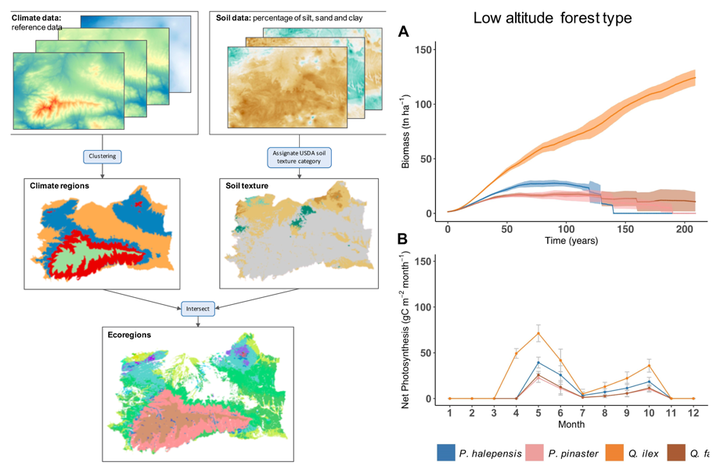A Step-by-Step Guide to Initialize and Calibrate Landscape Models - A Case Study in the Mediterranean Mountains

Abstract
The use of spatially interactive forest landscape models has increased in recent years. These models are valuable tools to assess our knowledge about the functioning and provisioning of ecosystems as well as essential allies when predicting future changes. However, developing the necessary inputs and preparing them for research studies require substantial initial investments in terms of time. Although model initialization and calibration often take the largest amount of modelers’ efforts, such processes are rarely reported thoroughly in application studies. Our study documents the process of calibrating and setting up an ecophysiologically based forest landscape model (LANDIS-II with PnET-Succession) in a biogeographical region where such a model has never been applied to date (southwestern Mediterranean mountains in Europe). We describe the methodological process necessary to produce the required spatial inputs expressing initial vegetation and site conditions. We test model behaviour on single-cell simulations and calibrate species parameters using local biomass estimations and literature information. Finally, we test how different initialization data—with and without shrub communities—influence the simulation of forest dynamics by applying the calibrated model at landscape level. Combination of plot-level data with vegetation maps allowed us to generate a detailed map of initial tree and shrub communities. Single-cell simulations revealed that the model was able to reproduce realistic biomass estimates and competitive effects for different forest types included in the landscape, as well as plausible monthly growth patterns of species growing in Mediterranean mountains. Our results highlight the importance of considering shrub communities in forest landscape models, as they influence the temporal dynamics of tree species. Besides, our results show that, in the absence of natural disturbances, harvesting or climate change, landscape-level simulations projected a general increase of biomass of several species over the next decades but with distinct spatio-temporal patterns due to competitive effects and landscape heterogeneity. Providing a step-by-step workflow to initialize and calibrate a forest landscape model, our study encourages new users to use such tools in forestry and climate change applications. Thus, we advocate for documenting initialization processes in a transparent and reproducible manner in forest landscape modelling.